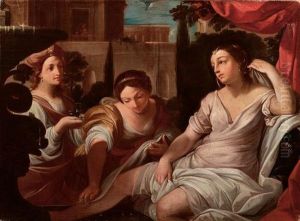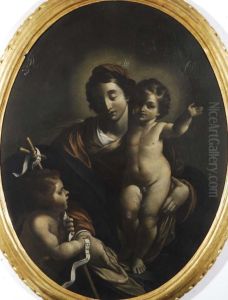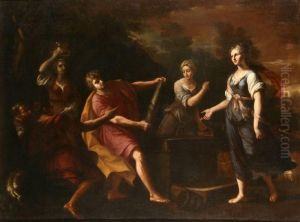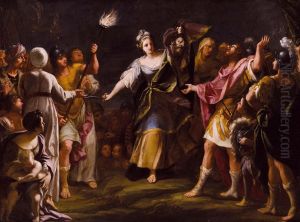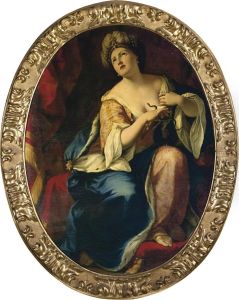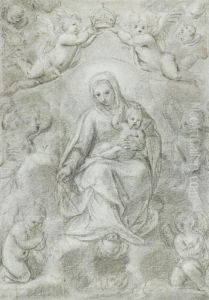Gian Girolamo Bonesi Paintings
Gian Girolamo Bonesi was an Italian painter born in 1653 in Bologna, Italy, during the Baroque period, which was characterized by dramatic expression and grandeur. His work primarily reflects the Bolognese and Roman styles of painting that were prevalent during the late 17th and early 18th centuries. Despite being less well-known than some of his contemporaries, Bonesi contributed to the rich tapestry of Italian Baroque art with his religious paintings and portraits.
Not much is known about Bonesi's early life or training. However, it is widely accepted that he was a pupil of the prominent Bolognese painter Domenico Maria Canuti. Under Canuti's guidance, Bonesi honed his skills in painting and developed a particular affinity for creating works with strong chiaroscuro effects, a technique that uses stark contrasts between light and dark to achieve a sense of volume and depth in painting.
Bonesi's body of work includes altarpieces, frescoes, and oil paintings. His religious works often featured saints and biblical scenes, which were common subjects in Baroque church decorations. These pieces were typically marked by their emotive figures, dynamic compositions, and the dramatic use of light, all hallmarks of the Baroque style. In addition to his religious works, Bonesi was also known for his portraits, which captured the characteristics and social status of his subjects with a high degree of realism.
Despite his talent, Bonesi did not achieve the same level of fame as some of his contemporaries, such as Carlo Cignani or Marcantonio Franceschini. Nevertheless, his paintings were appreciated for their devotional quality and technical proficiency. Some of his works can still be found in churches and private collections in and around Bologna, serving as a testament to his contributions to the Italian Baroque movement.
Bonesi's career spanned a period of significant change in the arts, with the Baroque period giving way to the Rococo and eventually the Neoclassical period. He died in 1725 in Bologna, leaving behind a modest but respected oeuvre that continues to be studied by art historians interested in the Baroque period and the Bolognese school of painting.
